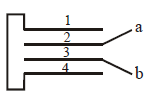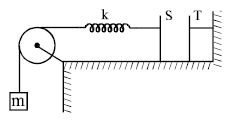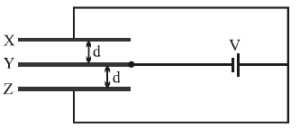Question 10: A parallel plate capacitor has capacitance C. If charge Q is given to one plate and another plate is kept uncharged. The potential difference between the plates is
View Solution
Solution:
To derive the potential difference between the plates when one plate is given a charge and the other plate is uncharged, let's go step by step:
1. Induced Charge on the Opposite Plate
When a charge is placed on one plate, the other uncharged plate will develop an induced charge of (due to electrostatic induction). This creates an electric field between the plates.
2. Net Capacitance of the System
For a parallel plate capacitor, the capacitance is given by:
However, we are not dealing with the conventional capacitor configuration here. Instead, only one plate is directly charged while the other has an induced charge.
The effective charge separation across the plates is the same, but the field contributions are halved because the uncharged plate contributes only via induction. This effectively makes the potential difference behave as if the charge on the capacitor were shared equally across its plates.
3. Potential Difference
The potential difference across the plates is related to the charge by:
Here, the effective charge separation contributes as if the charge on each plate were effectively halved due to induction:
Substitute into the equation for :
Final Answer:
The potential difference between the plates is:
Discuss this question


